
Related
Guests
- Barbara Ransbyauthor of the newly published biography, Eslanda: The large and Unconventional Life of Mrs. Paul Robeson. She is a professor of African-American studies, gender and women’s studies and history at the University of Illinois, Chicago. Her past books include the award-winning Ella Baker and the Black Freedom Movement.
Links
- BOOK EXCERPT: "Eslanda: The Large and Unconventional Life of Mrs. Paul Robeson"
- "Eslanda: The large and Unconventional Life of Mrs. Paul Robeson." By Barbara Ransby. (Yale University Press, 2012)
- More information on work of Barbara Ransby
- Listen to Paul Robeson Interview in the Pacifica Radio Archive
- "Ella Baker and the Black Freedom Movement." By Barbara Ransby. (University of North Carolina Press)
In a Black History Month special, we remember the lives of the legendary civil rights activist, singer and actor Paul Robeson and his wife Eslanda, whose story is not as well known. One of the most celebrated singers and actors of the 20th century, Robeson was attacked, blacklisted and hounded by the government for his political beliefs. Eslanda Robeson, known by her friends as “Essie,” was an author, an anthropologist and a globally connected activist who worked to end colonialism in Africa and racism in the United States. We’re joined by historian Barbara Ransby, author of the new biography, “Eslanda: The Large and Unconventional Life of Mrs. Paul Robeson.” [includes rush transcript]
Transcript
AMY GOODMAN: As Black History Month continues, we spend the rest of the show looking at the lives of two civil rights pioneers, Paul and Eslanda Robeson. Paul Robeson was one of the most celebrated singers, actors of the 20th century. The son of an escaped slave, Robeson was attacked, blacklisted, hounded by the government for his political beliefs. For years, Robeson was tracked by the FBI, as well as the CIA, Department of State and numerous other government agencies. In 1949, he was effectively blacklisted. In 1950, the government revoked Paul and Eslanda’s passports. For eight years, they were barred from travel. In 1958, Paul Robeson was interviewed by Elsa Knight Thompson on Pacifica Radio station KPFA.
PAUL ROBESON: The struggle of the Negro people, or of any people, cannot be by itself—that is, the human struggle. And so, I was attracted then to many members of the Labor Party, and my politics embraced also the common struggle of all oppressed peoples, including especially the working masses, specifically the laboring people of all the world. And that—that defines my philosophy. It’s a joining one of: We are a working people, a laboring people, the Negro people, and there is a unity between our struggle and those of white workers in the South. I’ve had white workers shake my hand and say, “Paul, we’re fighting for the same thing.” And so this defines my attitude toward socialism and toward many other things in the world. I do not believe that a few people should control the wealth of any land, that it should be a collective ownership in the interest of all.
ELSA KNIGHT THOMPSON: What is your reaction to the passive resistance as practiced in Montgomery?
PAUL ROBESON: Well, I think that was a magnificent movement, and nobody—can I say, there’s nothing—as far as the general theme of a nonviolent solution to the problem, this is the—there could be no other solution within our—within the frame of things today. I mean, this is a very important contribution. Nobody could think of a violent solution, unless Negroes—unless somebody wanted to ask somebody to be destroyed. I mean, that would be absurd. On the other hand, within that framework, I think that the Negro people have to be extremely militant and demand a little more than they are demanding today and to do a little more, not to do something—to do other things as well as pray, let me put it, as well as pray.
HAROLD WINKLER: Do you think there’s been a change in the attitude of the Negro churches toward militant political and economic action, Mr. Robeson?
PAUL ROBESON: I think there has, because it’s history, you know. Take Frederick Douglass. I belong to the AME Zion Church. There’s one in this area, and Douglass was a part of that church. Harriet Tubman, who formed the Underground Railroad, who was called the Moses of our people—they sang “Go Down Moses” when she came into the South to free the slaves. And Harriet Tubman. And we have a tradition of tremendous, consistent speaking out, you know, for our rights, like in the whole civil rights struggle. I mean by “militant” making people know that you want to be free like anybody else. And I think the churches, however—a lot of the responsibility still rests upon our churches, because that’s where so many of our people, you know, go. They have tremendous influence, too.
HAROLD WINKLER: Mr. Robson, do think your artistry as a singer and actor have suffered because of your involvement in political action or profited?
PAUL ROBESON: They have not. I feel that they have profited. They’ve only suffered when—they’ve suffered by the fact that because of my political views, which I certainly did not expect in a democracy, that I had been prevented from exercising my craft. However, I have kept singing all through the years. You know, I may be able to test it pretty soon. I just made a recording the other day for Vanguard, which they felt was superior to any records I have ever made. My voice is still in fine shape. I’ve been in the area.
AMY GOODMAN: Paul Robeson, speaking on KPFA to Harold Winkler and Elsa Knight Thompson in 1958. Thanks to the Pacifica Radio Archive. When we come back, Barbara Ransby on Paul Robeson’s wife Eslanda. Stay with us.
[break]
AMY GOODMAN: “Sometimes I Feel Like a Motherless Child” by Paul Robeson, singing. This is Democracy Now!, democracynow.org, The War and Peace Report. I’m Amy Goodman, as we turn to a new book that looks at Eslanda Robeson, known by her friends as “Essie.” She was an author, anthropologist, globally connected activist who worked to end colonialism in Africa and racism in the United States. The new biography is called Eslanda: The Large and Unconventional Life of Mrs. Paul Robeson. It’s by Barbara Ransby, professor at the University of Illinois. I spoke to Barbara Ransby yesterday and asked her to begin by outlining Paul Robeson’s wife Eslanda’s life.
BARBARA RANSBY: She was born in 1895. She died in 1965. She was initially a scientist and a chemist. She met Paul Robeson in 1919, and they married in 1921. She became the architect of his early career. She was his manager and publicist and confidante and coach. But then she decided to really forge a more independent career of her own, and she was a journalist, an anthropologist. She authored or co-authored three books: one about her travels in Africa, another one with Pearl Buck in 1949, and another one was a biography of her husband Paul. So she was an intellectual. She was an anti-colonial activist. She was an anti-racist. She advocated women’s rights. And she allied herself with a world anti-capitalist movement at a time when that was very costly to do so.
So, she was someone who, interestingly, stood on the precipice of history in a lot of ways. She went to colonial Africa in 1936. She went with Paul to the front lines of the Spanish Civil War in 1938. She traveled again to Africa, to the Congo, in 1946. She knew Jawaharlal Nehru. She knew Kwame Nkrumah and Jomo Kenyatta, who had been a classmate of hers. So she really was both a witness to and participant in some of the major and pivotal moments and phenomena in 20th century history.
So it was a fascinating research project. And also, as an activist myself, I really felt that the history of political repression in the United States, the role of African-American women in leadership of progressive and radical movements, and black internationalism were three very important themes in American and global history that really needed to be foregrounded.
AMY GOODMAN: For those who are not familiar with Paul Robeson, the significance of their relationship and who he was in American life, not to mention Essie?
BARBARA RANSBY: So, Paul Robeson was an internationally acclaimed performer, artist, early film and stage actor. He was enormously talented. He had been a graduate of Columbia Law School at a time when of course that was unusual, to say the least, for an African American. So he was intellectually and academically accomplished. He was also an All-American at Rutgers. He then went on to embrace a serious commitment and a very profound commitment to the black freedom movement, to the world movement against capitalism, and spoke out against that and paid a price for it. He was called before the House Un-American Activities Committee. His passport was taken. He was blacklisted. So he’s known both for his large talent and for his large political commitments, and also the fact that he was, along with Essie, persecuted for those commitments.
AMY GOODMAN: Can you explain how she traveled? Because, certainly, travel for Paul Robeson was made extremely difficult because of the kind of anti-communist witch hunt that was going on in this country. His passport was taken from him. If you can talk about what happened to him, and then talk about Essie Robeson and how she traveled?
BARBARA RANSBY: So, they both traveled together, up until 1950, when the passports were taken. And the passports were returned in 1958 when a Supreme Court case said it was—you know, it’s unconstitutional to take someone’s—American citizen’s passport because of their political beliefs. But they had both refused to sign affidavits saying that they were not communist. Now, they both also said publicly that they were not members of the Communist Party, and I take them at their word, but they refused to feed into the anti-communist hysteria at that time. And they both paid a price for it. They were not able to travel for eight years.
But they made the best of the time that they were here. They certainly were not cowed or silenced. Essie traveled around this country during that period, and she was a correspondent at the United Nations. She wrote extensively. She was there actually at the founding of the United Nations in 1945, and then she became a correspondent for a number of progressive and black publications. She wrote about decolonization in Africa, North Africa and sub-Saharan Africa. She wrote about the conflict in Korea. She wrote about India. So, she really had this very broad worldview, even when they were confined to this country.
They traveled extensively before 1950—Essie traveled, again, extensively on her own—and then after 1958. So, before 1950, she goes to Africa in 1936 for the first time. And it’s really against the backdrop of Italy’s horrific invasion and occupation of Ethiopia that she sails south to—first to South Africa and then Uganda and stays there for a couple of months over that summer. She meets some of the future leaders of the African National Congress. She is without Paul, by the way, at that point. She took her young son with her on that trip.
AMY GOODMAN: Also named Paul Robeson.
BARBARA RANSBY: But she’s without Paul Sr. But she meets people at a conference in 1936 in Bloemfontein, South Africa—A.B. Xuma, Z.K. Matthews. These are legendary figures in the South African freedom movement. She maintains a relationship with them for many years after that.
She then goes and spends time in Uganda doing her anthropological research, goes back to the Congo in 1946—and again, this is before the passports were withdrawn—travels throughout the Congo, is followed by, you know, British intelligence. They write some pretty nasty things about her. One comment that a MI5 document reflected, that the British spies who were following her indicated she was a dangerous customer because she dared to offer the idea that Africans—Africa should be ruled by Africans, and they found that quite subversive at the time. There’s all kinds of exclamation points and gestures of outrage in this document.
So, she traveled extensively before the passports were taken. And then after, one of her first trips was in 1958. She returns to sub-Saharan Africa to Ghana, and she attends the All-African Peoples’ Congress and meets Patrice Lumumba and Kwame Nkrumah and others. So, the travel was both before and after the passports, but the engagement with the world was continuous.
AMY GOODMAN: You write, Barbara Ransby, about Essie Robeson refusing to buy into theories of African primitivism, instead seeking to trace the connections between Africa and the wider world. After traveling to Africa, you quote her saying, “When I travelled through Africa, I discovered [that] I belonged to the African family, with 150 million African relations, with an ancient and honorable historic and cultural background.” Can you talk about this belief in the connectedness between Africans and African Americans that Essie expressed in some of her political writings and activism?
BARBARA RANSBY: Yes, of course. Well, and I have to—you know, we have to remind listeners, too, the time that it was. I mean, this was the time of really horrible stereotypes about Africa and the notion of Africa as a dark continent and a really unapologetic racism vis-à-vis Africa. And so, she was speaking and writing against that very prevalent view. And I must say, many African Americans were not readily embracing African heritage. So for her to talk about Africans as brilliant and beautiful and intelligent was really a, you know, subversive intellectual gesture.
She had studied at the London School of Economics. She studied with Bronislaw Malinowski. Jomo Kenyatta, the future leader of Kenya, was one of her classmates, as were a number of future African independence leaders. And she talked about Kenyatta’s influence on her, piquing her interest in Africa and the complexity of Africa as a continent, and the very specific cultures of southern and East Africa and Central Africa. So she traveled to Africa in 1936 to do her anthropological work in part because she disagreed with some of the racist comments and assumptions that she found among her classmates and some of her professors at LSE. So, she wrote of the connectedness between African Americans and Africans. She said Europeans have the old country, and sub-Saharan Africa, even though it’s not a country, it’s our old country—plural, our old countries, if you will. So she wrote extensively about that.
I also want to say, you know, the quote that you read about her connectedness to Africa and Africans and her commitment to African freedom and to really speaking out against the racist portrayal of Africa extended beyond the African continent, as well. There are similar quotes to the one you read where she talks about her connectedness to a world political family of colored people, as she referred to people of color, all over the world. And this was a moment of decolonization, when many Africans who were fighting against colonialism and fighting for independence, were also linked with Indians and others who were fighting for independence. The Nehru family, Jawaharlal Nehru and his sister, Vijaya Lakshmi Pandit, were close friends of Essie and Paul, and particularly Essie. And she saw the Indian struggle for independence as also an extension, and the people engaged in those struggles as also her people.
So, for me, it’s interesting as a—as a black feminist and also someone whose politics are very much internationalist. I think international solidarity is very important. Essie Robeson, at a time when many people were being penalized for having a global view and thinking in those terms, really reached out to the world and saw the—what was called the “third world project,” by Vijay Prashad and others, to be a part of her project, that project of challenging imperialism and fighting colonialism and neocolonialism in Africa and beyond.
AMY GOODMAN: Can you talk about Essie and Paul Robeson testifying before the House Un-American Activities Committee, the committee set up by Joseph McCarthy in 1953, three years into their passports being taken, not being able to leave the United States? The significance of this?
BARBARA RANSBY: So, Essie actually testifies separately. Essie testifies before McCarthy’s—Joseph McCarthy, who—you know, we talk about that era of redbaiting and witch hunting as McCarthyism, because he was such a virulent anti-communist. But Essie testified before McCarthy’s committee in the Senate, and that was in July of 1953. Paul testifies later. But she testifies, and she’s actually called before McCarthy’s committee not explicitly because of her relationship to Paul but because her book, African Journey, had called for African independence, and that was seen as subversive. And so, she was questioned about her book before the McCarthy committee.
And it’s kind of funny to read the testimony, because she was very defiant. She was first asked about the book, and in a very insulting way. And, of course, the committee was very racist in some of its assumptions about the blacks who testified before it, and sexist, as well. She was asked: Did she write the book by herself? And she said, you know, “I’m perfectly capable of writing a book by myself. I take offense at the question.” And she then flipped the questions that the committee was asking her and asked them, you know, what was their legitimacy? How did they dare ask her these questions? She invoked the Fifth Amendment against self-incrimination, but she also invoked the 15th Amendment, which is the right of blacks to vote. And the reason she invoked that is to point out that some of the Southern senators who served on that committee came from states where black people could not vote. And so, she really tried to use that testimony to make her own political statements rather than to cow and to be a victim of McCarthy’s inquisition. Afterwards, he sort of—McCarthy kind of glared down at her and said, “If you were a man, I would hold you in contempt.”
So, yeah, so she testified. And, you know, both Paul and Essie refused to renounce their radical friends and refused to renounce their own radical views. And again, they paid a price for it. Paul was blacklisted. They lost their house. They had extensive FBI files and so forth. So, you know, some of your shows have dealt with the issue of continued surveillance and repression in the United States. I think that lesson of the Cold War era and what people like the Robesons went through is a very, very important cautionary tale.
AMY GOODMAN: Barbara Ransby, you are not only the author of this new book, Eslanda, but your previous book, Ella Baker and the Black Freedom Movement: A Radical Democratic Vision. Especially for young people who perhaps weren’t even born before Ella Baker died in 1986, and it—if you could just give us a thumbnail sketch of her significance, in her public life, for the civil rights movement?
BARBARA RANSBY: Mm-hmm. So, Ella Baker was really active from the 1930s on. She was active in Harlem in the 1930s in the black cooperative movement, critical of capitalism and looking for alternatives. She cast her net widely in terms of the people that she worked with.
In the 1940s, she was an organizer for the NAACP, and she traveled south and really traveled through Ku Klux Klan territory, in very dangerous circumstances, to organize membership for the NAACP. But her approach in doing that work was not simply to hand out membership cards. She wanted people to own the organization. She wanted people to hold the leadership accountable. And she wanted to set up structures in that organization, so people, particularly people without credentials, without resources, without prestige, would be able to lend leadership and lend direction, and their voices would be heard. And so, she, both in principle, but also in practice, fought for a very democratic form of organization in the groups that she worked with.
In the 1950s, she traveled south to work alongside Dr. King in setting up the Southern Christian Leadership Conference after the Montgomery Bus Boycott. And as I mentioned before, she had a different style of leadership, so it was a little bit difficult for her, at times, working with some of the Southern ministers, who thought she should be taking notes and getting coffee, when she really had this enormous network of organizers through the South who respected her, who knew her strengths and talents and insights to build movements and campaigns. So she really earned the respect of people like Ralph Abernathy and, I think, Dr. King, as well.
But when the sit-in movements began in 1960, in February of 1960, Ella Baker quickly turned her attention to that work and to the great potential that she saw in that wonderful emergent organization, SNCC, the Student Nonviolent Coordinating Committee. She convened the first meeting at which SNCC was formed at her alma mater, Shaw University in Raleigh, North Carolina. And, you know, many people came out of SNCC who have gone on to do very important work in the world—Marian Wright Edelman, Bernice Johnson Reagon, Julian Bond, John Lewis and others. So these people were Ella’s political children, in a sense. She was a mentor and intellectual anchor for that organization, even across generational lines. And it was—you know, it was a major contribution to the black freedom movement and to the larger struggle for progressive change in this country. She did many other things, too. I could go on and on, but I think her contribution to SNCC was really quite significant.
AMY GOODMAN: What lessons could President Obama learn by reading these biographies, Barbara Ransby, of two political activists—
BARBARA RANSBY: That’s a good question.
AMY GOODMAN: —of Ella Baker and Eslanda “Essie” Robeson?
BARBARA RANSBY: Well, you know, when you ask that question, we assume that some of the policies that President Obama has implemented that many of us on the left would disagree with are out of lack of awareness. I don’t think they are, actually. I think he knows the history of Ella Baker, and I’m sure he knows the history of Paul Robeson, if not Eslanda Robeson.
I think the lessons for the rest of us are really to invest in the kind of networking, relationship building and solidarity work that defined Eslanda Robeson’s career, that it’s not going to be the heads of state who are going to forge a different vision of the world, but rather people who, you know, are building organizations and are stretching and making global connections independent of the nation states where our citizenship lies.
So, I think, in terms of Ella Baker’s lessons, her lessons are also about building grassroots movements and not placing so much emphasis and faith and hope in a single charismatic leader. And I think many people have looked to Barack Obama as a savior—the first black president, spoke out against the war with us back when it was, you know, in the Iraqi war, and is now of course carrying out targeted assassinations and drone attacks. And, you know, it breaks my heart, but I don’t think it’s for absent—the absence of historical knowledge. And I do hope, in the second term, we will see much of the knowledge and insight that I think Obama has about history and about, you know, what it means to try to stand on the right side of history, even when it’s difficult. I hope that will come to the fore.
AMY GOODMAN: Barbara Ransby, author of the new book Eslanda: The Large and Unconventional Life of Mrs. Paul Robeson. She’s professor at the University of Illinois. Her past books include the award-winning Ella Baker and the Black Freedom Movement: A Radical Democratic Vision.

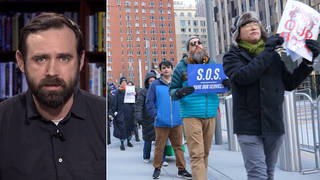
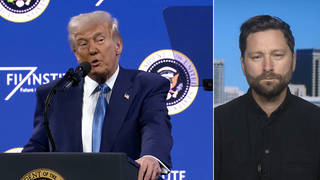
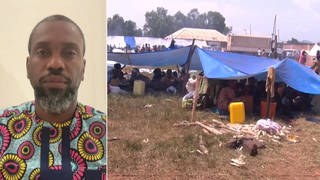
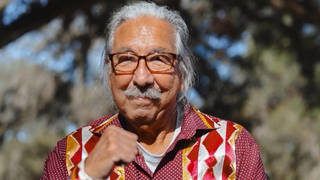

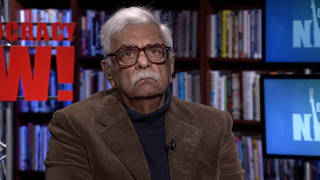
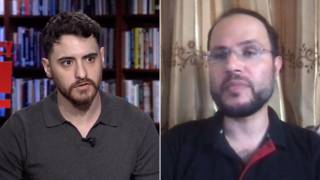
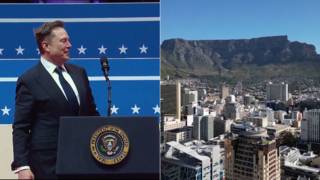

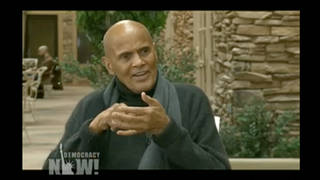
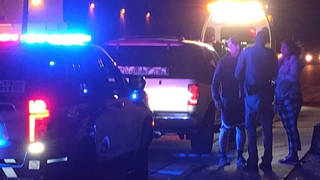
Media Options